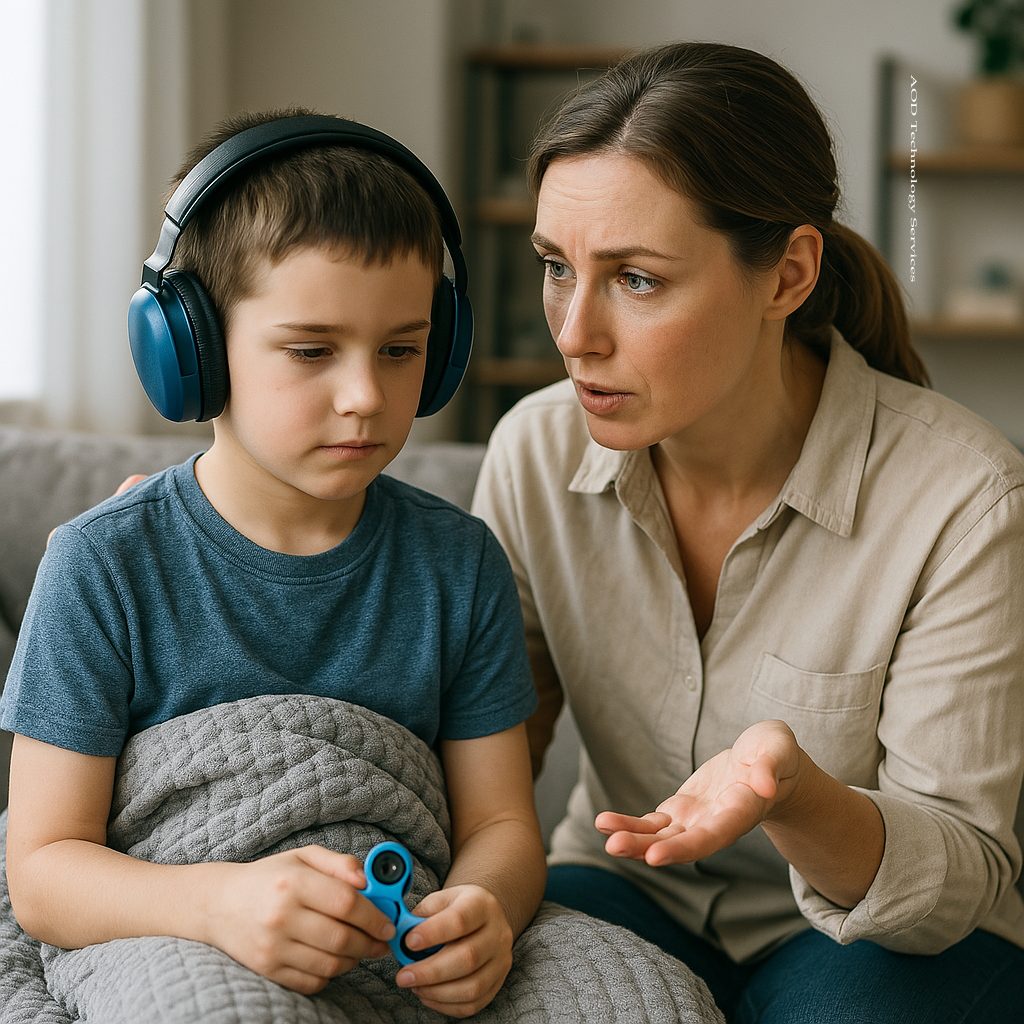Navigating Sensory Processing Challenges in Daily Life
Sensory processing differences are one of the most common and complex experiences for individuals on the autism spectrum. Whether it’s the sound of a crowded room, the texture of clothing, or the brightness of fluorescent lights, sensory stimuli can feel overwhelming—or, at times, almost invisible—to someone with autism. These sensitivities impact not only comfort but also how individuals engage with the world around them.
At our company, Autism Awareness Month is more than just a campaign—it’s personal. We see these challenges firsthand through our own families, and we believe in sharing practical knowledge to foster understanding, empathy, and support in our communities.
Common Sensory Sensitivities
People with autism may experience both hypersensitivity (over-responsiveness) and hyposensitivity (under-responsiveness) to sensory input. These differences vary greatly from person to person, but some common challenges include:
- Sounds: Everyday noises like vacuum cleaners, alarms, or even classroom chatter may be painful or distracting. Others may seek out repetitive sounds for comfort.
- Lights: Fluorescent lighting, screen glare, or flickering bulbs can cause discomfort, headaches, or disorientation.
- Textures: Certain clothing fabrics, tags, or food consistencies may be intolerable. Conversely, some individuals may crave tactile input and seek out specific textures.
- Smells: Strong scents from perfumes, cleaning products, or food can be overwhelming or even nauseating.
These sensory experiences can disrupt daily routines and make typical environments feel unpredictable or even threatening. Recognizing them is the first step toward meaningful support.
Strategies for Managing Sensory Challenges
There’s no one-size-fits-all solution, but thoughtful adjustments can make a profound difference:
At Home: Creating a Sensory-Friendly Space
- Designate a quiet area where your loved one can retreat when overstimulated.
- Use soft lighting, calming colors, and comfortable furnishings to reduce stress.
- Incorporate sensory items like weighted blankets, lava lamps, or textured pillows.
In Public: Coping with Overwhelming Environments
- Carry a sensory kit that might include noise-canceling headphones, sunglasses, or calming fidget tools.
- Prepare for outings by reviewing what to expect and identifying quiet spaces ahead of time.
- Respect their need to take breaks or leave early if things become too much.
At School or Work: Supporting Success
- Advocate for reasonable accommodations, such as noise-reducing headphones or flexible seating.
- Allow for sensory breaks during the day.
- Encourage open communication with teachers, supervisors, or colleagues to build understanding.
Helpful Sensory Tools and Products
Certain tools can help regulate sensory input and provide comfort throughout the day:
- Noise-Canceling Headphones: Reduce auditory distractions in loud environments.
- Weighted Blankets: Provide deep pressure input that can calm the nervous system.
- Fidget Tools: Keep hands busy and help with focus and self-regulation.
- Sensory-Friendly Clothing: Seamless designs, soft fabrics, and tagless options can greatly reduce discomfort.
These products are not just convenience items—they can empower individuals with autism to participate more fully in everyday life.
Supporting a Loved One with Sensory Processing Issues
Empathy goes a long way. If you have a friend or family member dealing with sensory challenges, here’s how you can help:
- Learn their triggers: Each person’s experience is different. Pay attention to what causes discomfort or distress.
- Respect their boundaries: If they say something is too loud, bright, or uncomfortable, believe them.
- Communicate clearly and calmly: Use simple, direct language, and be patient if they need time to respond.
- Encourage self-advocacy: Help them recognize and express their needs in a way that feels safe and supported.
Conclusion: Embracing Sensory Differences with Compassion
Sensory processing challenges are often invisible to those who don’t experience them—but their impact is very real. By making even small changes at home, in public, and in our workplaces, we can help make the world more inclusive and accessible.
Most importantly, we can empower individuals with autism to feel understood, respected, and supported. Every step we take brings us closer to a society where neurodiversity is not only accepted—but embraced.







